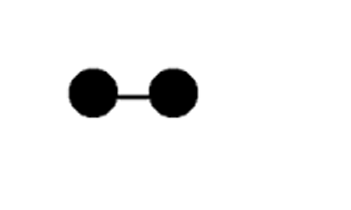![]() To return to previous
pages use the BACK or GO of your browser
To return to previous
pages use the BACK or GO of your browser
 The Millenennium Community
Study & Activity
The Millenennium Community
Study & Activity
The influence of the new brain stories on old brain sensitivities
Section One:
"I sense, therefore I am."
Would you place your name here............................. as a person who believes the statement in quotes above?
Please note this factual truth: 2 + 2 = 4 .. ( X.) True (.. ).False ..
Mathematics is considered to be the purist of sciences and fact. However, the fact that we each sense and feel is as true, if not more true than mathematics. We are not born knowing mathematics, we must learn it. However, we are born with the inherited ability to sense, feel and learn.
Do you trust your inborn senses and feelings as much as you trust mathematics or definitions? For example:
Pinch yourself gently. Do you trust that you felt something?
Now, pinch yourself too hard. Do you trust that a sense (pain, reason or both) calls to you to stop pinching yourself that hard?
We largely build our lives around the truth of mathematics and science. We are often taught to do so without abiding by the truths of what we naturally sense and feel. For example, with respect to living in balance with Earth, each other and ourselves, most people sense that we have gone too far, we are destructively out of control. Although we strongly sense it, we are presently unable to stop.
Section Two:
Very little, if anything, is out of balance in healthy ecosystems.
Do you have the ability to trust the sensory truths ecosystems convey to you? For example, if you go to a natural area and love a sunset there, do you believe that your love for that sunset is as true or more true than 2 + 2 = 4 ?
If you do believe this, you have great potential to help yourself and others learn to think in globally balanced ways, to live in greater peace and responsibly with yourself, society and nature.
The influence of stories on sensitivities *
The influence of a story on natural sensitivities can be seen in the night sky star picture that surrounds this page. Go to the full screen of the sky at the end of this page and follow the instructions there
*..... * *..... * *..... * *
Look at the the colored insignia at the top of this page. If you apply a story that the colors are more important than the black and white portion, or the colors are in the foreground, doesn't the picture take on a three dimensional quality that it did not have before?
*..... * *..... * *..... * *
CREATE A MOMENT THAT LETS EARTH TEACH: As you do each of the sections on this page, go to a natural area - potted plant, aquarium, backyard or backcountry, the more natural the better- and let an attraction there grab you and enter your awareness so that you recognize it: a flower, sound, breeze, warmth, motion, color, shape, texture, smell etc. Trust this attraction as a sensory truth that is as real and true as any other fact. What happens, what does it offer, add or say with respect to the point being made in each section on this page?
Section Four:
Below is an color design of purple and yellow colors and shapes. If you apply a label to it and call it faces, you will see faces, if you label it a vase you will see a vase.*
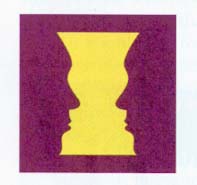
A critical observation: If we say the color yellow is important or closer to you, you see a vase and the faces disappear. This also happens with the color maroon and the faces. In other words, the authorities that give you instructions that you heed can determine how and what you perceive. They can engage you in making parts of the world disappear. For example, during the war, when Vietnamese people were labeled "gooks" it became easier to kill them.
A crucial question: Does identifying Earth as a "dead natural resource" or a "wisely balanced living organism" make a difference?
Section Five
Is this following design an Old Woman? or a Young Woman's Cheek?
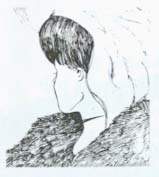
An unusual observation: As in the vase-faces image, if the picture above is labeled "Old Woman," people will see an old woman. Similarly, if it is labeled "Young Woman's Cheek," a young woman's cheek is perceived.
Labels determine perceptions: If instructions for the above image label the center feature below the hair as an eye, you perceive an old woman. If instructions label the center feature as an ear, you see the young woman's cheek. Again, the authority that gives you instructions you heed can determine how you know the world.
Implications: Do we learn to relate to nature from our direct sensory experiences with it or from our culture's nature conquering stories and labels about it?
Section Six:
Bonding to the Familiar ( fig. contains 2 chinese figures like * # )
.........
A group of subjects was shown 15 meaningless Chinese-type figures of calligraphy similar to the above, (but the above have meaning). Some figures were shown only once, others as many as 25 times. The subjects were then shown all 15 figures and asked which ones they liked. They consistently liked the figures to which they'd had the most exposure. The figures that had the least exposure were least appreciated.
Your Thoughts: What significance does this have with respect to the fact that we spend, on average, 99.9% of our lives separated from nature on a conscious sensory level?
Consider an example of this phenomenon in action. I keep getting letters from folks saying how much they like what they call the ying-yang graphic (Figure A ) that we use on some of our web pages. However, it is actually a Mimbres Indian pottery design from 900AD and is quite a bit different that the ying-yang symbol (Figure B) that we have become accustomed to. Aren't the two figures different? Are they sending the same message?
........................
................Figure A............................. .................. ...Figure B
Section Seven:
Effects of Economic Rewards
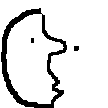 ...................................
...................................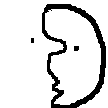 ...................................
...................................
..........Figure 1 ..............................................................Figure 2
In an experiment, people played a card game in which they randomly selected cards.
They were payed a dollar whenever they received a card with the Figure 1 image-card above.
They forfeited a dollar whenever they received the Figure 2 image-card above.
After an extended period, the players were shown Figure 3 below. Most of them easily recognized Figure 1, the money winning figure but Figure 2 was often very difficult for them to perceive.
Figure 3:
...............Fig1..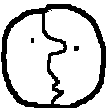 ....Fig 2
....Fig 2
What implications does this demonstration have with respect to our relationship with Nature and our economy? Can you see a relationship between it and Upton Sinclair's observation: "It is difficult to get people to understand something when their salary depends upon them not understanding it."
Section Eight:
The Nature of Subconscious Relationships:
Sharon, an adult woman, had an adverse reaction to a blue block of wood she had selected, sight unseen, from a bag of wooden objects. She blindly selected the block because she was attracted to its shape and smoothness when she groped and explored it by touch. At first she did not know why she didn't like it when she saw it. In time, she realized it was a subconscious reaction. The block was same shade of blue as the walls of her room where, as a child, she had been molested.
The existence of subconscious memories and their effect on our daily relationships has long been established. Although these memories seldom enter our rational thinking, the hurt feelings attached to them often do when an experience presents similar attributes to the original hurt.
Without awareness of the subconscious source of our discontents, we have no choice but to relate in hurt ways to ourselves, each other and the environment. Oblivious to the reconciling knowledge held in our subconscious, even in safe settings we often feel vulnerable, frightened or angry. This produces the stress, depression. and addictivness to destructive gratifications all too common in our lives.
Section Nine:
3 x 5 cards were distributed to a group of people in a classroom. At the bottom of half the cards distributed appeared the word BARBELL. At the bottom of the remaining cards appeared the word SUNGLASSES.
Figure 3 below, was shown to the study participants for 10 seconds and then removed from sight (picture shown is similar to O-O )
The participants were then asked to draw the above image on the card they had.
People who had the word SUNGLASSES written on their card often curved the line connecting the circles to accommodate the shape of the nose. Some drew earhooks on the glasses.
People who had the word BARBELLS written on their card often thickened the size of the bar. Some wrote the weight of the bells on the circles.
Implications: The labels we place on the world shape the way we know the world to be and how we describe it.
Section Ten
We are, today, in real life, in far worse shape than were the subjects of the astonishing Milgram studies of 1961
(and Stanford Prison Experiment in 1971). In them a supervisor
committed the subjects to administer increasingly painful electrical
shocks to people who answered meaningless questions incorrectly. The
subjects could listen to the recipients in another room but could not
see them. They could hear them cry out in increasing pain and anguish
as the experiment progressed and the shock voltage increased, sometimes
until the recipient died.
The subjects did not know that the alleged recipients did not actually receive the shocks and that their cries were recordings.
What was not predicted was that although some subjects cringed and
objected, most would not stop hurting the shock recipients as the
voltage and responding cries increased and the supervisor urged them to
continue. The subjects, instead, responded to the authorities. It was
as if the subjects were insane, they could not act reasonably.
This experiment was recently repeated and the results were the same.
Your Thoughts:
Do you think the following descriptions apply to how we learn to know nature within and around us in our nature estranged society?
brainwashing: A body of knowledge that centers on changing people without their knowledge. No exchange occurs, communication is one-sided. Organization remains fairly rigid; change occurs primarily to improve thought reform effectiveness. Uses an instructional mode to persuade. Takes authoritarian & hierarchical stance; no full awareness on the part of the learner. Is deceptive. Uses improper and unethical techniques.
brainwashing: Keep the person unaware of what is going on and the changes taking place. Control the person's time and, if possible, physical environment. Create a sense of powerlessness, covert fear,and dependency. Suppresss much of the person's old behavior and attitudes. Instills new behavior and attitudes. Mystical manipulation. Doctrine over person. Put forth a closed system of logic; allow no real input or criticism.
Do we relate to nature from our direct sensory old brain experiences with it or from our culture's conquer nature stories about it?
Two Significant Psychological Questions:
Does identifying the thoughts, sensations and feelings that register in your consciousness as being "webstrings" make a difference in
-your connectedness to the web of life?
-what you think?
-what you feel?
-how you act/relate?Is there a value in recognizing that psychologically you may be conscious of the world either through humanity's verbal label/story webstring or through 52 other webstring attractions?
Can our new brain stories mislead us?
1. How long did the Hundred Year War last?
2. Which country makes Panama hats?
3. From which animal do we get catgut?
4. In which month do Russians celebrate the October Revolution?
5. What is a camel-hair paintbrush made of?
6. The Canary Islands in the Pacific are named after what animal?
7. What was King George VI's first name?
8. What color is a purple finch?
9. Where are Chinese gooseberries from?
10. Did Columbus discover America?
ANSWERS:
1. 116 years, from 1337 to 1453
2. Ecuador
3. from sheep and horses
4. November...the Russian calendar was 13 days behind ours.
5. squirrel fir
6. The Latin name was Insularia Canaria - Island of the Dogs.
7.Albert. When he came to the throne in 1936 he respected the wish of Queen Victoria that no future king, after her late husband, should ever be called King Albert.
8. distinctively crimson
9. New Zealand
10. America existed and was inhabited long before Columbus arrived.
![]() To return to previous
pages use the BACK or GO of your browser
To return to previous
pages use the BACK or GO of your browser
**Material borrowed from http://www.sit.wisc.edu/~amhadjin/idiot.html
*For these and other similar studies see Vernon, M.P. The Psychology of Perception, Gretna Louisiana: Pelican, 1971

